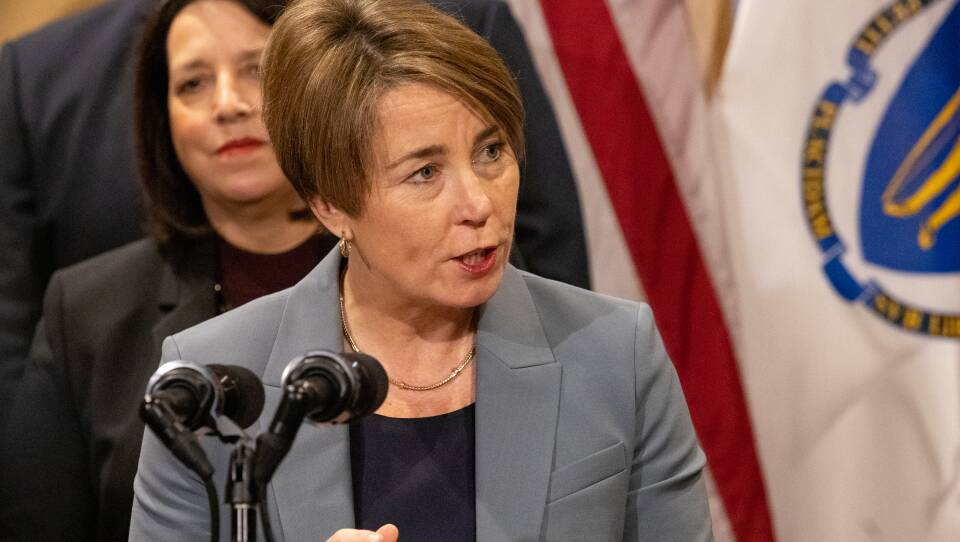Gov. Maura Healey on Wednesday announced a forthcoming hiring freeze across state agencies, while also rolling out a new online dashboard tallying the scope of federal funding cuts to Massachusetts.
Her office described the pause as a response to a “tightening budget outlook” for the coming fiscal year and “widespread economic uncertainty.”
Starting May 27, state agencies and departments will be barred from hiring new employees, with exceptions for some public safety and direct care jobs.
Matthew Gorzkowicz, Healey’s budget chief, said the move “will give us added flexibility in the budget to respond and react to unforeseen program needs and other deficiencies that may arise.”
“While we hope for the best, it is both prudent and responsible to be prepared and take control of what we can now,” he said in a statement.
A major chunk of Massachusetts’ state budget is built around federal dollars.
Beacon Hill lawmakers are debating a roughly $61 billion dollar budget for the fiscal year that starts in July, which would raise spending by 6% over this year. That spending plan relies on $16 billion in reimbursements from the federal government.
Healey’s team plans to reevaluate the freeze after the new state budget is signed and in place, which typically happens sometime in July.
Less than an hour before announcing the freeze, her office also publicized a federal funding dashboard.
The Trump administration, Healey said, has so far slashed $350 million in direct funds to state agencies in Massachusetts, including money for disaster prevention aid, community health centers, substance use disorder treatment and increased broadband access.
“The federal cuts outlined in this dashboard are more than just numbers – they represent cuts to healthy food for babies, mental health care for students, and disaster prevention for our communities,” Healey said in a statement.
The new state webpage also encourages local governments, nonprofits and businesses to fill out a form and tell state officials if their funding is reduced or their grants terminated.
Specific reductions shown on the dashboard include $19 million for immunizations and vaccines for children, a $14 million state grant that supports broadband access efforts, and $106 million in Elementary and Secondary School Emergency Relief money, which was originally allocated to schools for COVID-19 recovery to help with learning loss and infrastructure upgrades.
The programs and funding amounts on the dashboard will be updated regularly.
Healey’s office said that, in addition to the direct cuts, funding for some programs has been delayed and the U.S. Department of Agriculture recently canceled shipments to local food banks.





